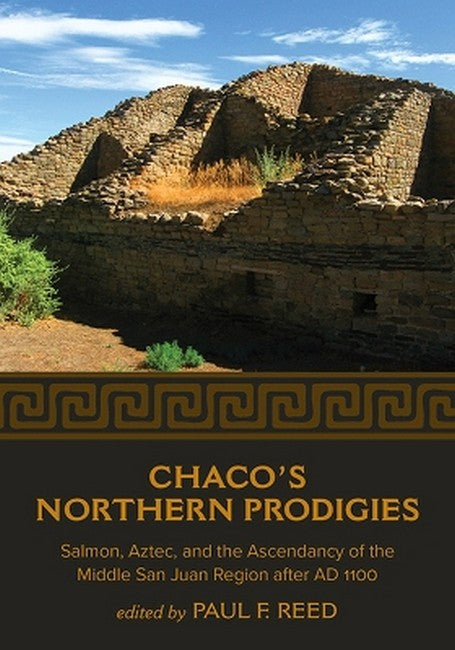Paul F. Reed is a preservation archaeologist with the Tucson based Center for Desert Archaeology. He is the author of The Puebloan Society of Chaco Canyon and the editor of Foundations of Anasazi Culture (University of Utah Press, 2000).
Request Academic Copy
Please copy the ISBN for submitting review copy form
Description
List of Figures List of Tables Preface Part 1: Introduction 1. Setting the Stage: A Reconsideration of Salmon, Aztec, and the Middle San Juan Region in Chacoan and Post-Chacoan Puebloan History Part 2: Salmon Pueblo 2. Salmon Ruins: Architecture and Development of a Chacoan Satellite on the San Juan River 3. Salmon Pueblo as a Ritual and Residential Chacoan Great House Part 3: Material Culture Analyses: Salmon Pueblo 4. Subsistence and Plant Use During the Chacoan and Secondary Occupations at Salmon Ruins 5. Parasite Pathoecology of Salmon Pueblo and Other Chacoan Great Houses: The Healthiest and Wormiest Ancestral Puebloans 6. Animal Bone from Salmon Ruins and Other Great Houses: Faunal Exploitation in the Chaco World 7. Sighting Along the Grain: Differential Structural Wood Use at the Salmon Ruin 8. Human Remains Recovered from the Tower Kiva Salmon Ruins Part 4: Material Culture Analyses: Across the Middle San Juan 9. An Initial Assessment of Perishable Relationships Among Salmon, Aztec, and Chaco Canyon 10. Ceramics of the Middle San Juan Region: Potters, Recipes, and Varieties Part 5: New Research in the Middle San Juan Region 11. Puebloan Communities on the South Side of the Middle San Juan River 12. Animas Anamnesis: Aztec Ruins or Anasazi Capital? 13. Comparing Great House Architecture: Perspectives from the Bluff Great House Part 6: Synthetic Views of the Middle San Juan Region 14. Chacoan Society: The View from Salmon Ruins 15. The Position of Salmon Ruins in the Middle San Juan, AD 1000-1300: A Perspective from Ceramic Design Structure 16. The La Plata, the Totah, and the Chaco: Variations on a Theme 17. Sacred Landscapes: The Chaco-Totah Connection Part 7: From the Outside: Salmon and the Middle San Juan Region in a Larger Context 18. Population Dynamics among Salmon's Northern Neighbors 19. The Middle San Juan and Chaco Canyon Part 8: Conclusion 20. Prodigy, Rebel, or Stepchild? The Middle San Juan Region vis-a-vis Chaco Canyon References Contributors Index
This book is a timely synopsis of the archaeology of the Middle San Juan region. All of the contributors are experts in their particular subject matter and bring this expertise to bear in some unique and at times, exceptional ways."" - Charles Riggs, Fort Lewis College ""Offers a welcome and long overdue perspective on some of those people who lived north of Chaco in the San Juan River system and experienced a historical development nearly as astonishing."" - New Mexico Historical Review ""Offers a major contribution to the archaeology of the northern American Southwest. The book's strength is that each chapter is jam-packed with data."" - Journal of Field Archaeology ""A well-contructed compendium of archaeological syntheses. Reflect[s] individualized perspectives from inside and outside the study area that take contrasting positions on many of the relevant issues of chronology, environment, and cultural traditions and influences."" - Journal of Archaeological Science ""Well organized, illustrated, data and reference rich. Most importantly, it provides a balanced spectrum of views bringing together both legacy and recent research to address a series of substantive issues."" - Journal of Archaeological Science

